
50% Off Our Old Packaging – Same Fresh Hay, Just a New Look Coming Soon!
For a limited time, all hay products are 50% off. Fresh, nutritious, and perfect for rabbits, guinea pigs, and more!

For a limited time, all hay products are 50% off. Fresh, nutritious, and perfect for rabbits, guinea pigs, and more!
Stay in the loop on NEW products and deals!


We get it. You want to ensure your chinchilla is healthy, happy, and prospering. But are you confused about finding the best hay for your chinchilla? Do you have a list of unanswered questions? You’re in the right place. In this article, we will delve into the benefits and comparisons of different hay types for your furry bestie. If you want an answer to a specific question, browse the table of contents. Keep reading!
Looking for an easy, yet extremely important fact about hay for chinchillas? Your chinchilla’s food pallet should consist of 80-90 percent hay. That’s right! While chinchillas love tasty snacks like carrots and dried cranberries, don’t forget to keep the hay intake up. As a rule of thumb, provide hay for your chinchilla around the clock. But not just any hay. We believe timothy hay, orchard grass hay, meadow hay, and botanical hay are the best hay options for your chinchillas.
Safe hay for chinchillas includes timothy hay, orchard grass hay, meadow hay, and botanical hay. We’ll explain farther below.
Of all the hay types, timothy hay is the most popular choice for chinchillas. Timothy hay is loaded with extra fiber, moderate protein, vitamins and minerals, providing amazing GI health to your chinchilla. Because of the extra crunch and abrasive nature of timothy hay, your chinchilla’s dental health will be excellent. Your furry critter’s ever-growing teeth will constantly be shaved down while chewing this treat.
Timothy Hay is supplied in three different cuts, which we outline below.


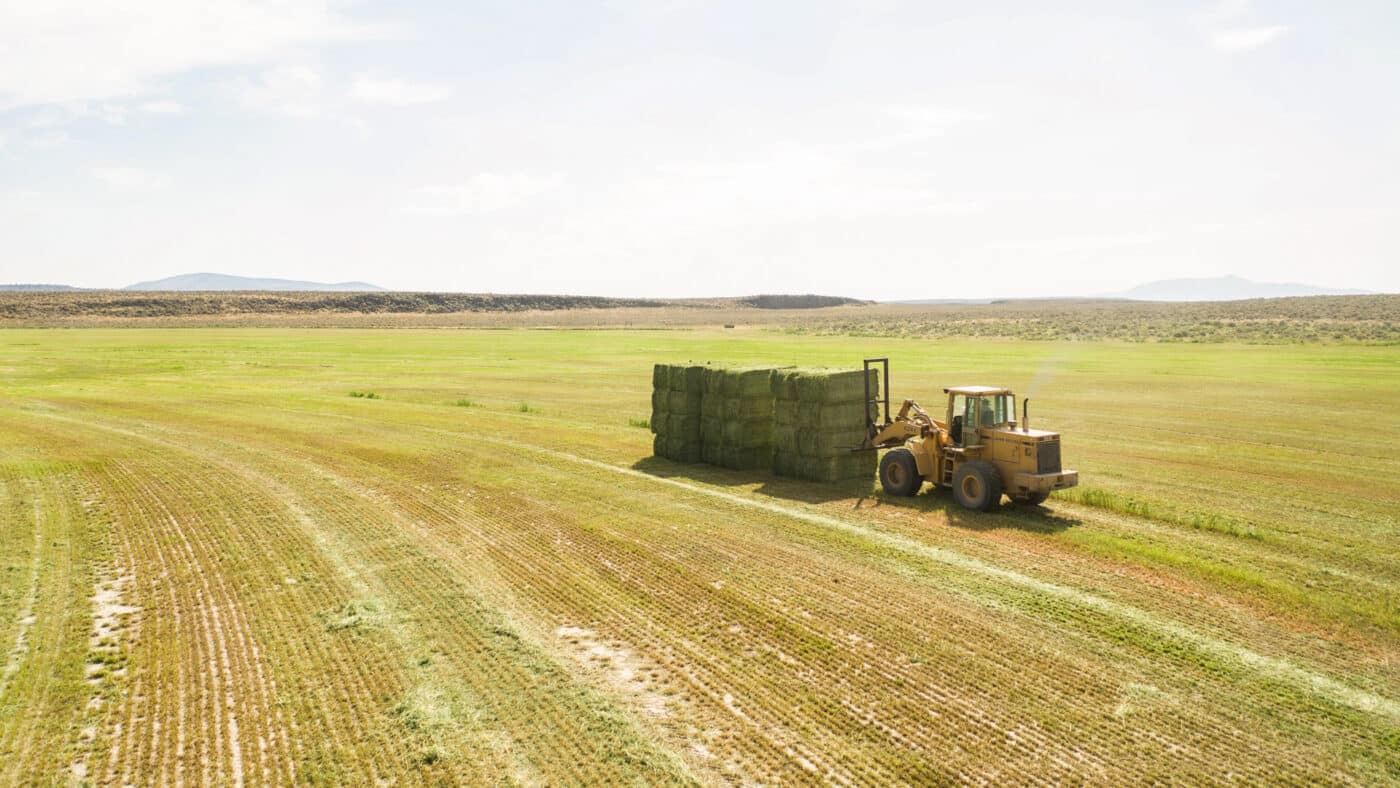
The softer texture of orchard grass hay makes it easier to chew for chinchillas with weaker teeth. Because of its higher protein and calcium content, orchard grass hay is excellent for chinchillas who struggle to maintain a healthy weight. Additionally, orchard grass hay provides good digestive health for chinchillas and a lower sugar intake.


Meadow Hay is a combination of different grasses and other plant varieties. As a result, your chinchilla will be motivated to forage through meadow hay and find interesting pieces of dried plants. Watch your chinchilla become mentally stimulated!
The rich fiber content of meadow hay aids in digestion, preventing gastrointestinal issues. Want another benefit? Chinchillas find meadow hay to be a tasty treat because of the full range of flavors in each bite.
If possible, choose an organic meadow hay to avoid pesticide exposure to your chinchilla.


Looking for hay that is bursting with both flavor and choice herbal scents? While it depends on the exact distributor, botanical hay is a mixture of chamomile, dandelion, rose petals, lavender, raspberry leaves, nettle, peppermint leaves, and marigold flowers.
Botanical hay isn’t just pretty. Every nibble offers a superb source of fiber, promoting good digestive health. Additionally, this safe hay for chinchillas ensures optimal dental health and hygiene.
Wow, we just went through a lot of information. For quick processing, we created a table with 5 safe hay options for chinchillas.
| Product | Fiber | Protein | Fat | Texture | Minerals | Pros |
| Timothy Hay | 25-35% | 7-14% | 1-2% | Soft and crunchy | 0.25-0.5% Calcium; 0.2-0.4% Phosphorus;1.5-2.5% Potassium;0.15-0.3%Magnesium | Excellent source of fiber; balanced nutritional intake for chinchillas; promotes good dental and GI health |
| Orchard Grass Hay | 25-35% | 7-12% | 1-2% | Soft | 0.25-0.5%Calcium; 0.2-0.4%Phosphorus;1.5-2.5% Potassium;0.15-0.3%Magnesium | Excellent source of fiber; easy to chew for chinchillas with teeth problems; promotes good dental and GI health |
| Meadow Hay | 25-32% | 7-12% | 1-2% | Soft | 0.25-0.5%Calcium; 0.2-0.4%Phosphorus;1.5-2.5%Potassium;0.15-0.3%Magnesium | Excellent source of fiber; provides good GI health; chinchillas find meadow hay to be very tasty |
| Botanical Hay* | Max 32% | Not listed on products | 1.5% | Soft and crunchy | Not listed on products | Excellent source of fiber; promotes good dental and digestive health; great aroma |
*Because of the variety of plants that can be added, botanical hay’s nutritional values vary per distributor. For this table, values for botanical hay are taken from Oxbow.

Overall, hay promotes great digestive health for chinchillas and provides an excellent source of vital minerals and nutrients.
In order for chinchillas to have optimal digestive health, they must eat hay because of its density of both digestible and indigestible fibers. Let’s break it down further. Digestible fibers maintain a healthy digestive system and ensure the gastrointestinal system is working properly. As digestible fibers are broken down by enzymes, a chinchilla receives energy and absorbs needed nutrients. The indigestible fibers in the cell walls of hay promote healthy droppings and protect against diarrhea and constipation.
Are you ever concerned at how fast your chinchilla’s teeth grow? It’s unbelievable! Thankfully, hay offers a solution to this headache. Because of hay’s natural abrasive nature, chinchilla’s teeth are constantly worn down as they graze on the hay in their cage. While humans use toothbrushes, chinchillas find a dental cleanse through their main source of nutrition.
Every chinchilla needs enough nutrients and minerals in order to maintain a healthy lifestyle. While eating hay, your furry friend will receive the necessary potassium, magnesium, phosphorus, calcium, protein, fiber, and other needed vitamins.
How is this a benefit? Chinchillas can develop bladder stones when excess calcium builds up in their bladder. For this reason, it’s important to stick with safe hay for chinchillas such as timothy hay or orchard grass hay which contain low calcium. The best practice is to limit alfalfa or legume hay (which has a high concentration of calcium) to very occasional, tiny treats.
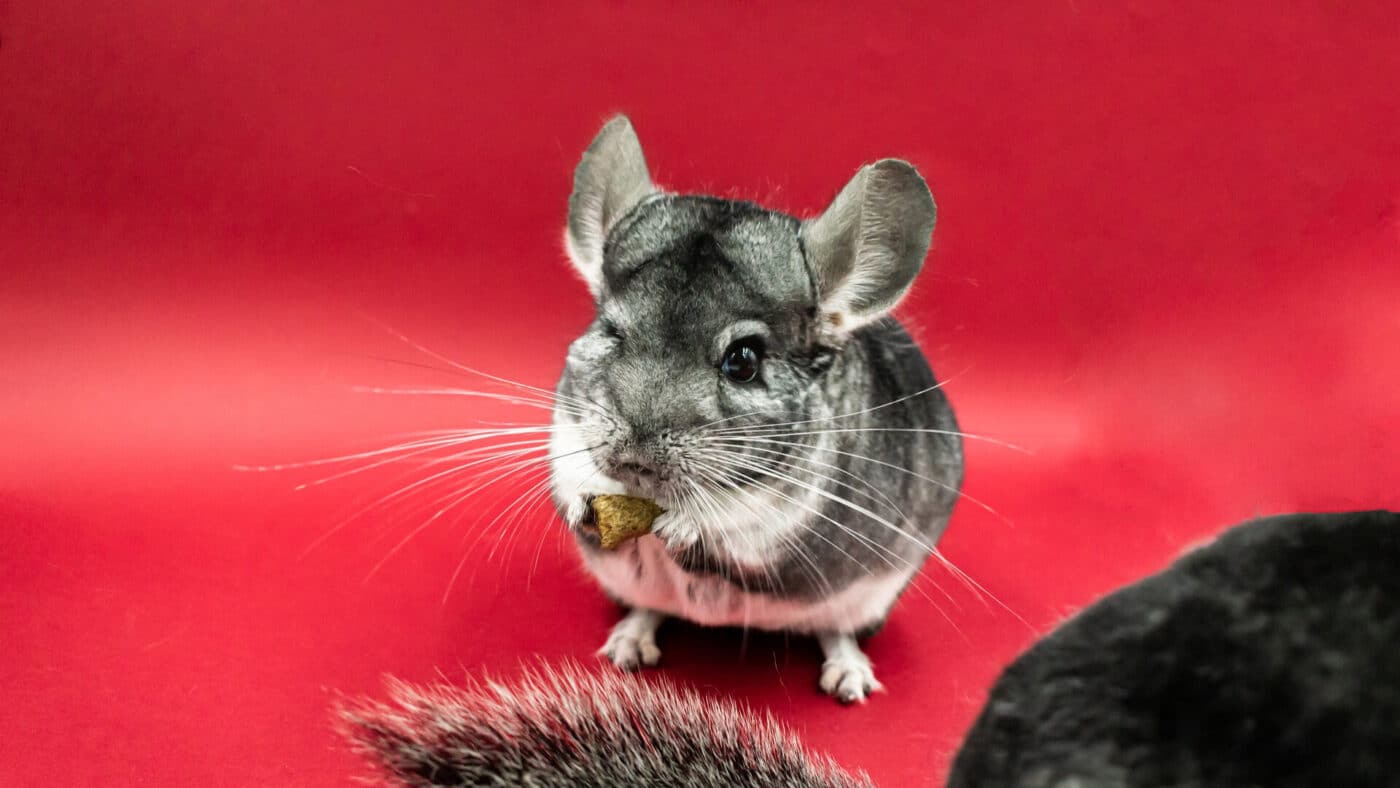
To ensure you only feed your chinchilla safe hay, protect your hay from dust or mold and chose hay sources that are free from harmful chemicals
Dusty or moldy hay can flare up allergies in your chinchillas. Keep your hay in a cool, dry place where rain water or other elements won’t interfere with its quality. Cover up your hay in a sealed container so dust and other dirt particles can’t infect your chinchilla’s hay.
If you notice your hay has developed mold or attracted dirt, don’t try to be thrifty. Use that hay for your garden space or throw it away. In the future, you can aim to store your hay in a safe place.
At its worst, pesticides and herbicides may cause digestive issues, liver problems, and (at times) even poisoning. When you choose organic meadow hay, you ensure that your beloved chinchilla is grazing on a source of high fiber without encountering any toxic chemicals. In fact, at Blue Mountain Hay, we supply organic meadow hay at high altitudes, ensuring your chinchilla has the best eating experience possible.
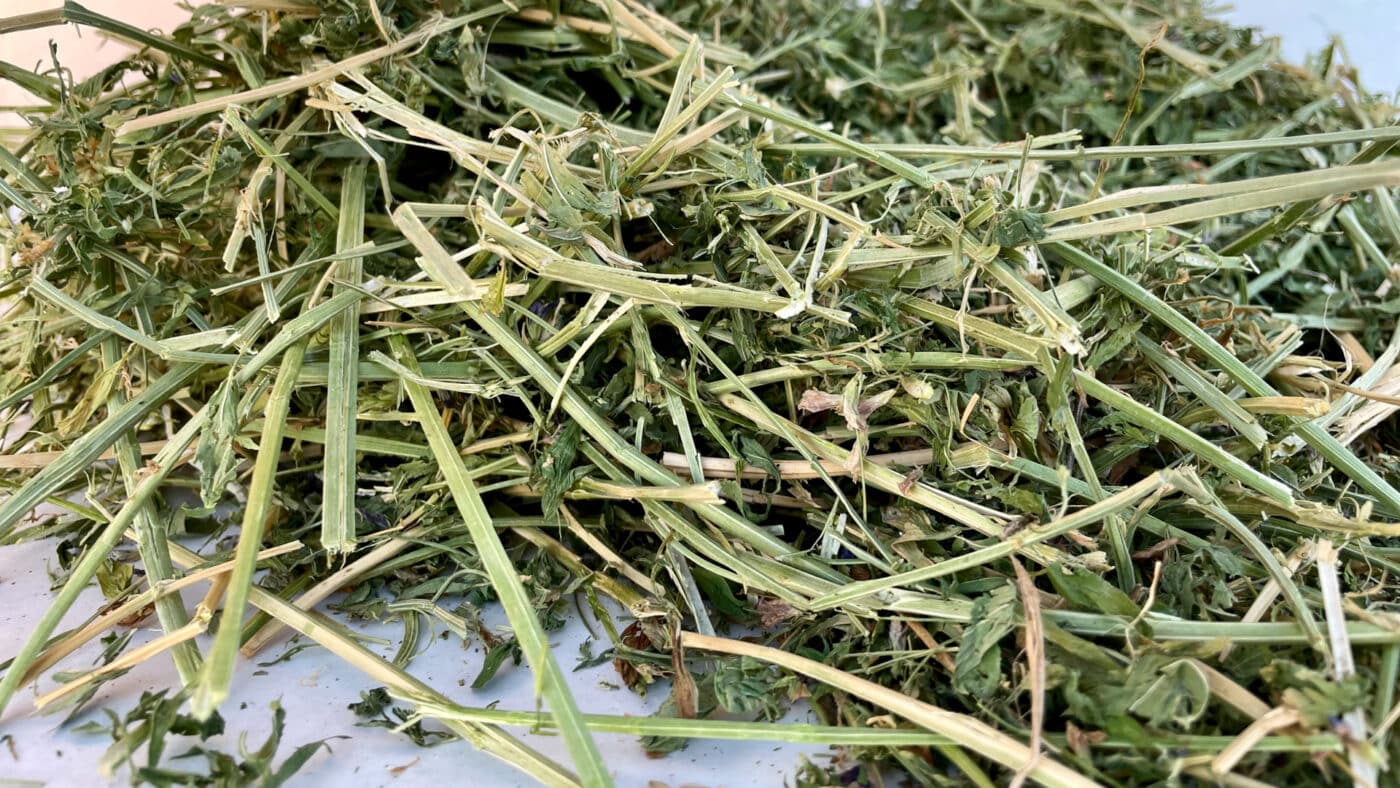
We want your furry friends to remain safe as they graze on hay every day of the week. To keep your mind at peace, we have detailed different types of hay that you should avoid for your pet chinchilla.
While alfalfa hay is high in fiber, vitamins, magnesium and phosphorus, it’s imperative that you do not overfeed it to your chinchilla. Why? The high density of calcium can cause potential kidney issues or bladder stones. To keep your chinchilla safe, we recommend you limit alfalfa hay consumption and choose hay types that are low in calcium.
Like alfalfa hay, legume hay is rich in calcium. And as you know extreme amounts of calcium are a red-flag for your chinchilla friends and pose the risk of bladder stones. If you do give legume hay to your chinchilla, ensure it is in very tiny amounts. However, we suggest that you instead choose safe hay options for chinchillas such as timothy or meadow grass hay.
At first glance, oat hay may seem like an excellent option. Like timothy hay, oat hay is high in fiber or roughage, giving more balanced gut health to your chinchilla. Stalks of oat hay are considerably crunchy, ensuring that your chinchilla’s teeth are consistently shaved down to a healthy size. Every bite of oat hay is bursting with necessary vitamins and minerals for your chinchilla.
However, keep a few things in mind. First, oat hay is lower in calcium, which eliminates it as a primary hay choice for your furry friend. Second (and most importantly), when farmers harvest oat hay in cloudy weather it produces a high density of nitrates which can harm your pet chinchilla.
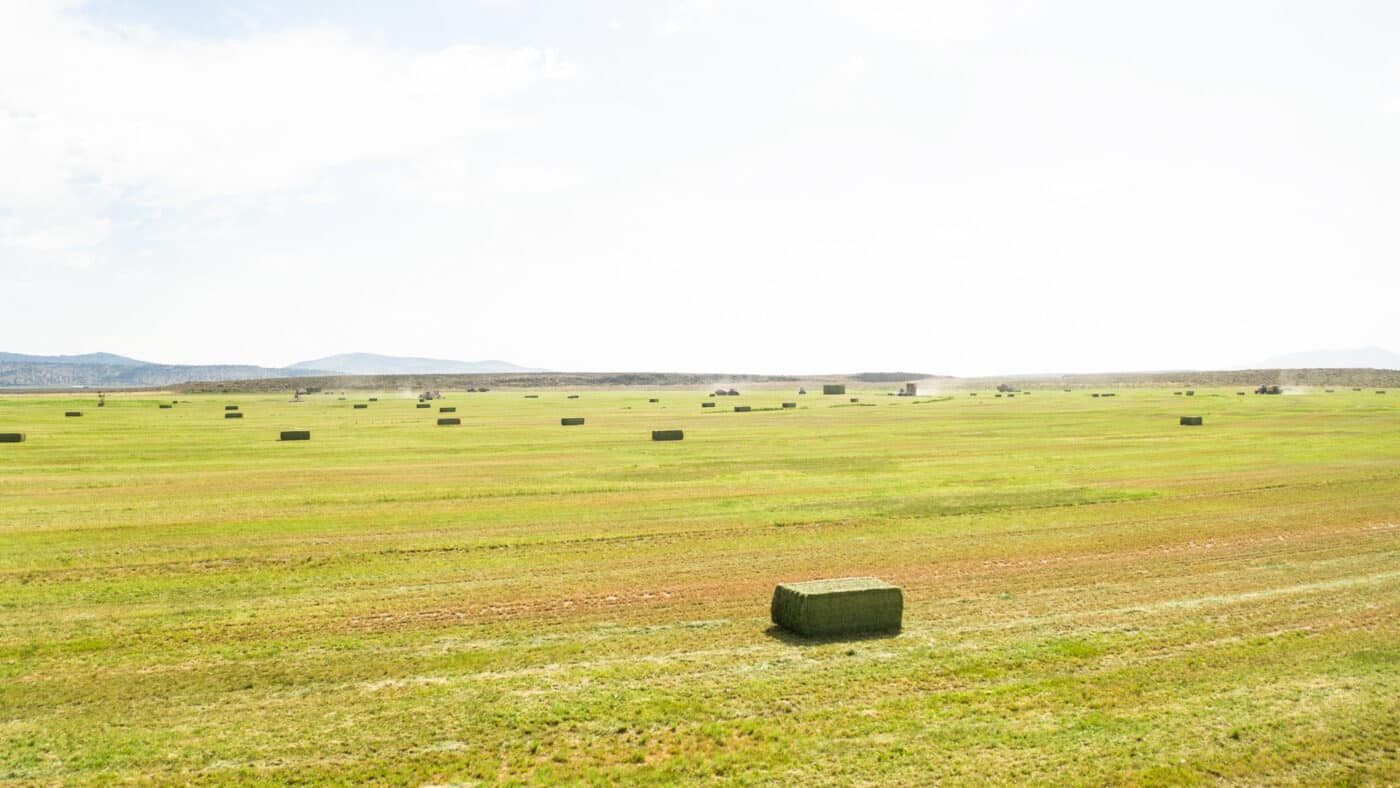
In short, you are the expert on your pet chinchilla. Observe your chinchilla’s reaction to different hay types and diversify the hay options you feed your chinchilla in order to accurately understand your pet’s exact hay tastes. However, timothy hay is usually a staple that most chinchillas consume.
Each chinchilla is unique. Keep an eye on your chinchilla’s eating preferences. Does your chinchilla refuse to nibble timothy hay? It may be time to introduce your chinchilla to some organic meadow hay or botanical hay.
Don’t feel like you have to feed your rabbit only timothy hay or orchard grass hay. In fact, it’s recommended to diversify the hay types you give chinchillas. For example, you may want to add a mixture of different hays to your chinchilla’s cage – orchard grass hay and timothy hay for a high-fiber diet or small doses of alfalfa hay to a normal amount of botanical hay.
Unfortunately, hay that is dusty can produce respiratory problems in chinchillas. If you observe this issue in your chinchilla, don’t despair! There are alternative hay options available. Compressed hay pellets are processed to limit the amount of dust in each bite of hay. Additionally, hay cubes reduce dust intake for your chinchilla.

You can combine different types of hay to produce a more robust high-fiber diet, low-sugar diet, or high-energy diet for your pet chinchilla. Remember that the high-energy diet should be kept in moderation.
Fiber is the key to your chinchilla’s optimal digestive health and well-being. Combine the following
If your chinchilla is pregnant or lethargic, you may want to occasionally supplement their diet with very small amounts of the following hay:

Don’t overthink it. Your chinchilla’s diet should be composed of 80-90 percent hay. In short, you will not overfeed your chinchilla with hay (unless it’s alfalfa or oat hay). Keep your chinchilla constantly supplied with fresh timothy hay, orchard grass hay, and/or organic meadow hay.
Yes, it is safe to put hay in your chinchilla’s cage. Because your chinchilla needs a rounded diet of hay, ensure that your furry friend’s cage is always loaded with enough hay to keep them full at all times. For an estimated size suggestion, think about a few handfuls of hay or roughly 1-2 ounces a day.

Here at Blue Mountain Hay, we value the life of your chinchilla. As a result, we offer hay for chinchillas that are grown at high-altitudes in the Pacific Northwest, enabling hay to grow slower and become richer in nutrients. Each package of hay is thoroughly inspected, allowing you to feed your chinchilla fresh hay at every moment of the day. Feel free to browse our selection of timothy hay, orchard grass hay, and organic meadow hay!
If you are interested in some of our other products, check out our organic garden straw mulch for your garden, or our organic litter pellets for small animals.
We made it! And as you load up your chinchilla’s diet with 80-90 percent hay, we wish you all the best as you continue to make more memories with your furry friend.

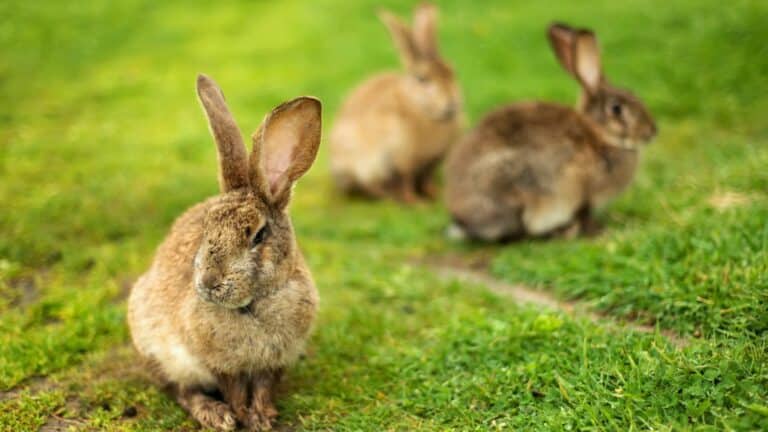
Got questions about which hay options are best for your pet rabbit? You’ve come to the right spot!

Don’t allow yourself to be ignorant about RHDV2. Read this article for more information!

Keep your plants cozy and safe this winter! Read our article on the many advantages of straw mulch during the winter months and how you can effectively use straw.